This is a preprint.
A tRNA modification in Mycobacterium tuberculosis facilitates optimal intracellular growth
- PMID: 36865327
- PMCID: PMC9979996
- DOI: 10.1101/2023.02.20.529267
A tRNA modification in Mycobacterium tuberculosis facilitates optimal intracellular growth
Update in
-
A tRNA modification in Mycobacterium tuberculosis facilitates optimal intracellular growth.Elife. 2023 Sep 27;12:RP87146. doi: 10.7554/eLife.87146. Elife. 2023. PMID: 37755167 Free PMC article.
Abstract
Diverse chemical modifications fine-tune the function and metabolism of tRNA. Although tRNA modification is universal in all kingdoms of life, profiles of modifications, their functions, and physiological roles have not been elucidated in most organisms including the human pathogen, Mycobacterium tuberculosis ( Mtb ), the causative agent of tuberculosis. To identify physiologically important modifications, we surveyed the tRNA of Mtb , using tRNA sequencing (tRNA-seq) and genome-mining. Homology searches identified 23 candidate tRNA modifying enzymes that are predicted to create 16 tRNA modifications across all tRNA species. Reverse transcription-derived error signatures in tRNA-seq predicted the sites and presence of 9 modifications. Several chemical treatments prior to tRNA-seq expanded the number of predictable modifications. Deletion of Mtb genes encoding two modifying enzymes, TruB and MnmA, eliminated their respective tRNA modifications, validating the presence of modified sites in tRNA species. Furthermore, the absence of mnmA attenuated Mtb growth in macrophages, suggesting that MnmA-dependent tRNA uridine sulfation contributes to Mtb intracellular growth. Our results lay the foundation for unveiling the roles of tRNA modifications in Mtb pathogenesis and developing new therapeutics against tuberculosis.
Figures
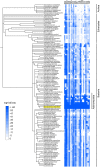
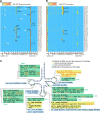
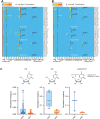

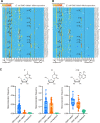

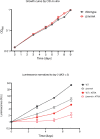
Similar articles
-
A tRNA modification in Mycobacterium tuberculosis facilitates optimal intracellular growth.Elife. 2023 Sep 27;12:RP87146. doi: 10.7554/eLife.87146. Elife. 2023. PMID: 37755167 Free PMC article.
-
Transfer RNA modifications and genes for modifying enzymes in Arabidopsis thaliana.BMC Plant Biol. 2010 Sep 14;10:201. doi: 10.1186/1471-2229-10-201. BMC Plant Biol. 2010. PMID: 20836892 Free PMC article.
-
Chemoproteomic Approaches to Studying RNA Modification-Associated Proteins.Acc Chem Res. 2023 Oct 3;56(19):2726-2739. doi: 10.1021/acs.accounts.3c00450. Epub 2023 Sep 21. Acc Chem Res. 2023. PMID: 37733063 Free PMC article.
-
Intracellular peroxynitrite perturbs redox balance, bioenergetics, and Fe-S cluster homeostasis in Mycobacterium tuberculosis.Redox Biol. 2024 Sep;75:103285. doi: 10.1016/j.redox.2024.103285. Epub 2024 Jul 31. Redox Biol. 2024. PMID: 39128229 Free PMC article. Review.
-
The impact of Mycobacterium tuberculosis on the macrophage cholesterol metabolism pathway.Front Immunol. 2024 May 30;15:1402024. doi: 10.3389/fimmu.2024.1402024. eCollection 2024. Front Immunol. 2024. PMID: 38873598 Free PMC article. Review.
References
-
- Björk G.R. and Hagervall T.G., Transfer RNA Modification: Presence, Synthesis, and Function. EcoSal Plus, 2014. 6(1). - PubMed
Publication types
Grants and funding
LinkOut - more resources
Full Text Sources
